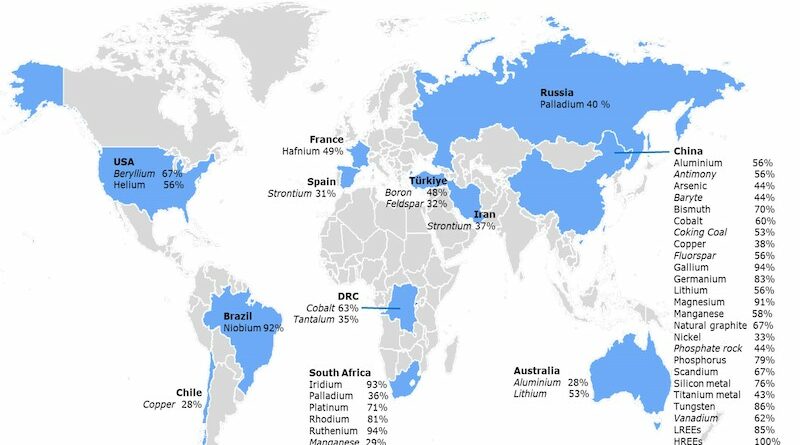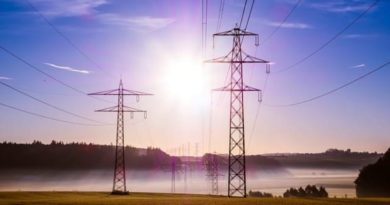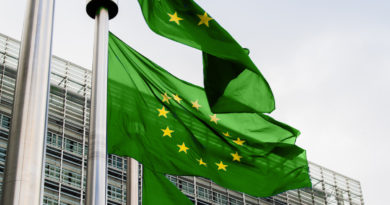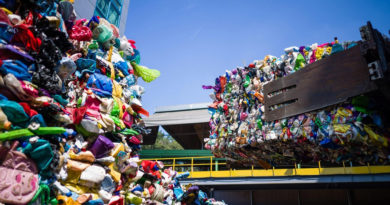
The race to secure a sustainable supply of critical and strategic raw materials continues to intensify.
It puts Europe’s resilience, it’s ability to act and the continent’s future prosperity under an unprecedented stress test.
Climate change calls for a bold and swift transformation of the economy. With metals and minerals being key enablers of the European Green Deal and for the shift from a linear brown to a circular green economy, the challenge to secure present and the exponentially growing future supplies of raw materials has been elevated to the very top of the political agenda. The need for critical raw materials from both secondary and primary sources has exploded.
As the energy transition gains momentum, market projections suggest a seven-fold and a forty-fold overall increase in mineral and metal demands for clean energy technologies by 2040.
To make matters worse, the Russian war in Ukraine has put Europe’s energy sector, its offtaking industries and private households under immense strain. It is now abundantly clear that Europe cannot wait any longer to accelerate its transition to clean, alternative forms of energy and away from its dependence on fossil fuels, much of which come from Russia.
But it is the colliding ambitions of the world’s two biggest markets, the USA and China, that have caused alarm across the European raw materials‘ consuming industries. Belatedly, the potential impact of this has awoken Europe to the urgency of mobilising a highly secure and resilient supply of critical raw materials and the need to counteract a one-sided supply dominance.
For decades China has held a quasi-monopoly on rare earth metals and it continues to grow its strategically leading position in the processing of several other materials used for rechargeable batteries, including lithium, cobalt, nickel, graphite, manganese, copper, and aluminum. Now it has laid bare its intention to take on the lithium extraction market, a move that could see it control at least two-thirds of the global supply of this vital metal by the middle of the decade.
On the other side of the world’s geopolitical divide, the USA made its intentions very clear with the approval of its game-changing Inflation Reduction Act (IRA). With $369 billion in investment incentives for clean energy projects, this represents the largest climate spending package ever.1 It clearly signals the USA’s renewed priority to reduce its dependence on China and to gain access to the indispensable raw materials it needs for making batteries for clean tech, solar panels, wind
turbines and energy storage and conversion systems.
Europe: Squeezed from outside and within
Europe, with its twin digital and green transition well underway, sits between these two competing political and economic powerhouses and risks its own world-leading clean tech ambition being squeezed out of the race. Sourcing and securing supplies of base, advanced, critical, and strategic raw materials that adhere to Europe’s self-imposed ESG standards are in peril unless all of Europe’s member states show strong leadership and act without hesitation to drive and execute the raw materials agenda at all stakeholder levels.
The challenge is clear: what needs to be done now?
So, the nature and scale of the challenge is clear. The question is, what can we do about it? What should be Europe’s response to the ramped-up raw materials ambitions of the USA and China, as well as other big players, and what can it do to level the playing field against these competing giants? In a signal to the world that the European Union is no longer prepared to stagnate, the European Commission devised the ‘Critical Raw Materials Act’ and the ‘Net-Zero Industry Act’, two highly significant and ambitious proposals. EIT RawMaterials welcomes both acts as they provide direction and clear guidance.
The ‘Critical Raw Materials Act’ in particular highlights the urgency to diversify supplies away from single-state economies, reduce mining permitting times that will help mobilize investment in responsible extraction, expand European processing and recycling capacities, and secure feedstock supply from within Europe.
However, if Europe is serious about its net zero carbon emission objectives, and if it wants to maintain jobs, competitiveness and grow its technological advantage, those recommendations need to be implemented without delay. In addition, each EU country and its respective industrial ecosystems must set and commit to their own quantifiable impact targets.
Europe has to act now to make supply shortages and disruptions to the secure flow of raw materials into our economy a thing of the past. As a matter of priority, Europe must build a highly reliable pipeline of minerals and metals that are responsibly extracted, manufactured, processed and recycled within the continent.
To this end, in 2020, EIT RawMaterials was entrusted by the European Commission to manage the European Raw Materials Alliance (ERMA) with the aims of reducing European dependency on strategic and critical raw materials from outside Europe, and to promote environmental, social and governance (ESG) standards.
ERMA responded robustly by developing two of Europe’s strategic raw materials value chains, which represent the views of over 600 stakeholders across the EU, academia, research, NGOs, industrial associations and government organizations. The first of these, the 2021 Rare Earth Magnets & Motors Action Plan, presented proposals to build Europe’s first rare earth value chain. This plan resulted in 14 de-risked and bankable investment projects estimated to supply at least 20% of Europe’s needs for permanent magnets by 2030 from almost 0% today.
The second action plan, to be published in May 2023, addresses the importance of Materials for Energy Storage and Conversion. It focusses on anticipating and quantifying the enormous raw materials investments needed to feed the transformational requirements for electrification and energy storage. This plan addresses the objectives of the REPowerEU Plan to increase the headline 2030 target for renewables from 40% to 45% under the Fit for 55 package.
It presents massive investment opportunities and addresses bottlenecks and gaps in four primary strategic action areas: (1) materials in solar energy, (2) battery materials (3) fuel cells and electrolysers, and (4) alternative energy storage and conversion. As a result of this action plan almost 50 investment cases were identified, targeting materials for energy storage and conversion across Europe and beyond, with a total investment need exceeding €15 billion.
If these projects were realised, many of Europe’s raw materials needs, as set out in the Critical Raw Materials Act, could be sourced from within the EU by 2030, a sure sign of the enormous potential for Europe that lies ahead.
It is my firm belief that both action plans, together with the many other investment opportunities that have been identified within the raw materials sector, represent an unprecedented opportunity for European industry. We must now act swiftly to establish robust and reliable raw materials pipelines in Europe in order to implement deep greenhouse gas reductions.
_____________________________________________________________
1 Inflation Reduction Act of 2022, www.energy.gov/lpo/inflation-reduction-act-2022 (Accessed 17 March, 2023)




